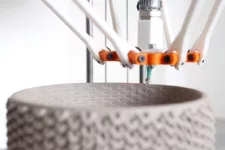3D printing technology used to only exist in the world of science fiction, but nowadays anyone can purchase a desktop 3D printer and start creating their own physical objects without too much time, energy, or effort.
At the same time, if you’re serious about making the most of your 3D printing projects, you’re going to need to be sure that you invest in a quality 3D printer that is going to be:
• Simple and straightforward to use
• Capable of producing the prototypes you want to print and
• A printer that fits perfectly in your budget
While there are more choices to pick from when it comes to 3D printing technology today than ever before, all of these options can be a bit of a detriment to you finding the perfect 3D printer for your needs. It is very easy to get overwhelmed by all of the choices available, especially when all of these 3D printers are advertising themselves as the best piece of technology ever released!
By arming yourself with the information we offer in this quick guide, however, you’ll find it becomes a lot easier to find the 3D printing solution that works best for your specific situation.
Let’s dive right in!
What are you hoping to print in the first place?
The very first thing you’ll have to ask yourself before you even start to look at different 3D printing options is what you are going to be printing for the most part from here on out with this new piece of technology.
If you are just looking for something to kind of play around with so that you can better understand everything 3D printing technology has to offer your choices are going to be different compared to someone that needs a 3D printer to implement into their production and prototyping workflow at a commercial enterprise.
By understanding what you’re going to print in the future you’ll have a much better chance of finding a solution tailor-made for you.
What size 3D printer are you shooting for?
It’s also important that you think about the size and form factor of the printer that you are hoping to use moving forward.
Desktop 3D printing solutions are incredibly popular right now, but the printing deck that they offer is nowhere near as large as the one that may be required by a commercial enterprise looking to implement this technology into their research and development department.
On the flipside, there is no real advantage to investing in giant war oversized 3D printers if you aren’t going to be printing in a large format. You’ll only waste money, time, energy, and materials on a printer that isn’t ever used to its maximum capacity.
Suggest you read 3D Printing Materials Pallet Enlarges with Material Innovation.
What kind of scanning technology are you going to leverage?
If you’re serious about rapid prototyping with 3D printers, you’re going to need to make sure that you get your hands on a scanning technology that is capable of taking accurate 3D scans and then producing accurate 3D renders to utilize with your specific printer.
Handheld scanning tools are the most popular right now, as they offer a tremendous amount of flexibility and adaptability that you just won’t find anywhere else. Some 3D printing solutions also have scanners built right into the production deck as well, though they are a bit more limited – but won’t break your bank account as they aren’t accessories you have to purchase after the fact.
Learn more about Best Diy 3D Scanner.
What about your budget?
Finally, you’re going to need to make sure that you are looking at 3D printing solutions that fit your budget without too much overage.
As we highlighted above, the technology for 3D printer has become a lot less expensive than it ever used to be in the past and prices continue to drop on an almost daily basis why the technology behind these printers get better and better.
Consumer grade printers routinely go for $1000 or less, but if you want to step up into something really special – or something more commercial – you’ll want to spend at least $2000 or more.
Your budget is going to inform a lot of the purchasing decisions you make going forward so make sure that you really consider what you’re getting into financially with this kind of technology before you take the plunge.








